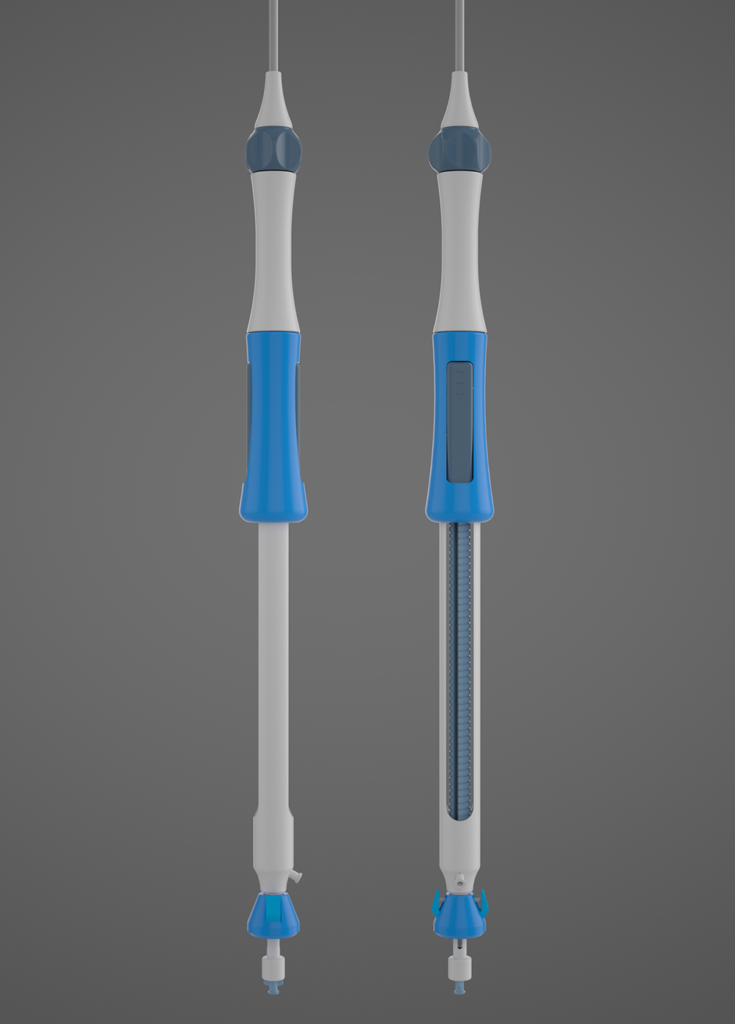
Solutions
Kardiozis, a disruptive technology, to treat abdominal aortic aneurysm and better reduce aortic aneurysm size.
Principle
KARDIOZIS disruptive approach is to prevent the risk of type II endoleaks following an EVAR in 20 to 40% of cases, and better reduce aortic aneurysm size. Kardiosis endoprosthesis includes external thrombogenic fibers that produces, upon implantation, a blood coagulation effect around the endoprothesis keeping the aneurysm sac to grow and be nourished by lateral arterioles. This eliminates the risk of early or late endoleaks, offering to both patients and surgeons a secure and effective therapy through fast and minimally invasive surgery.
PROCEDURE
The Kardiozis endoprosthesis is implanted by inserting the delivery system and a guidewire via the groin. The surgeon advances the delivery system through the aorta towards the aneurysm under fluoroscopic guidance.
The endoprosthesis, hitherto compressed inside the delivery system, is then partially deployed. If necessary, the position of the endoprosthesis can be adjusted to avoid covering the renal arteries.
Once properly positioned, the Kardiozis is fully deployed and its legs released. To anchor it to the aortic wall and prevent migration, the surgeon releases the anchor pins.
Principle
This system alone is not enough to exclude the entire aneurysm. Extensions must be implanted inside the arteries supplying blood to the lower limbs and these are placed inside the endoprosthesis legs.
The surgeon positions the first extension under fluoroscopy and then deploys it. To insert the second extension, the surgeon withdraws the previous delivery systems from the vasculature.
The same procedure is repeated for the second extension, which is positioned under fluoroscopy, so that the aneurysm is completely excluded.
The delivery system and the guidewires are then retrieved from the vasculature, and the surgeon closes the incisions.
Kardiozis differs from conventional endoprostheses, which are unable to prevent other aortic branches from supplying blood to the aneurysm.
Fibers around the endoprosthesis occupy the aneurysm sac and are in direct contact with blood, which naturally forms thromboses on them.
Platelets progressively clot on the fibers and prevent retrograde blood flow from entering the aneurysm. Once clot formation is complete and the aneurysm is thrombosed, pressure decreases and the aortic diameter returns to normal.
